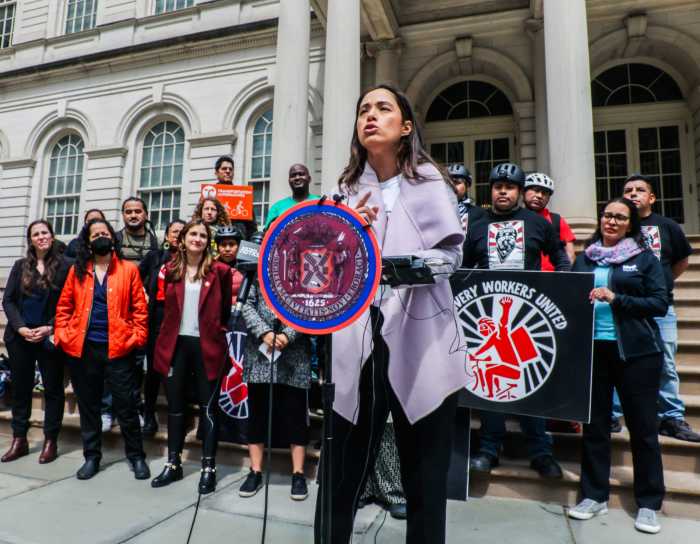Life blossoms among an abandoned stretch of railway in Queens.
A group of high school students is attempting to document the wide array of plant and wildlife found along the overgrown tracks that snake through several neighborhoods and Forest Park.
The path, dubbed the QueensWay by advocates hoping to transform it into a park, runs right behind the Metropolitan Expeditionary Learning School in Forest Hills, providing the perfect outdoor laboratory for curious teens.
“This is part of an effort to train our students to teach other people how to document plant and animal life as citizen scientists,” said Evan O’Connell, who teaches global history to 9th and 10th graders.
As part of the afterschool program, a group of students venture with O’Connell into the Rockaway Beach Rail Line tracks to gather information, then return to school to identify and log their findings.
The students also explore how issues such as grade, soil, and drainage can affect the habitat of plants and animals.
It’s all part of a larger national effort to teach kids important concepts in science, technology, engineering and math — also known as STEM.
“They are already focused on issues of sustainability, human impact and biodiversity, native and invasive species in their biology curriculum,” O’Connell said. “This kind of allows them to see the impact of that.”
The program receives support from The Trust for Public Land and Friends of the QueensWam as well as AT&T, which funds STEM programs throughout the country, including Girls Who Code and All Star Code.
“STEM isn’t limited to coding in front of a computer,” said Marissa Shorenstein, president of the east region for AT&T. “Scientific discovery and innovation are possible anywhere, even right in our own backyard.”
Ninth-graders Jenna Thomas and Isabella Marrero have used their knowledge of invasive species — plant and animal life not native to a particular environment — to identify Norway maple, black birch and oak trees in the thick canopy of green that surrounds the tracks in Forest Park.
“We’ve also seen different bird species, such as blue jays, robins and sparrows,” said Marrero.
And while the students have spotted squirrels and feral cats, other well-known nocturnal denizens such as opossums and raccoons have remained elusive.
“Despite all the human impact, biodiversity still exists in our part of Forest Hills,” Thomas said.
O’Connell said students are hoping to put their new skills to use in the spring for the City Nature Challenge with Macaulay Honors College. The challenge is a national competition among citizen scientists to observe and document wildlife in an urban environment.





































